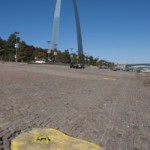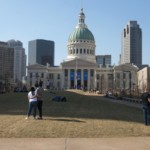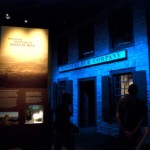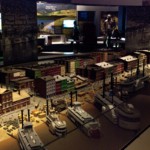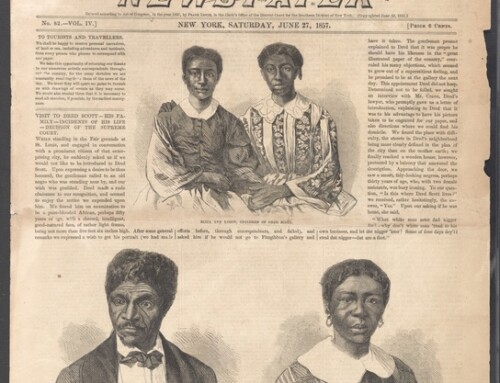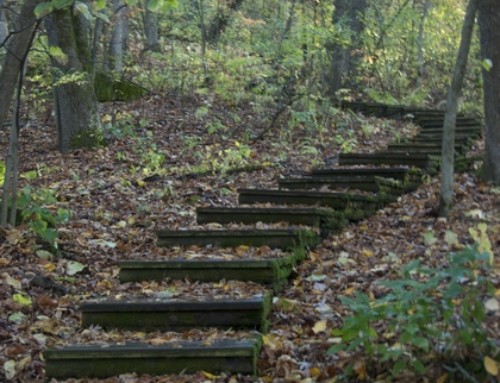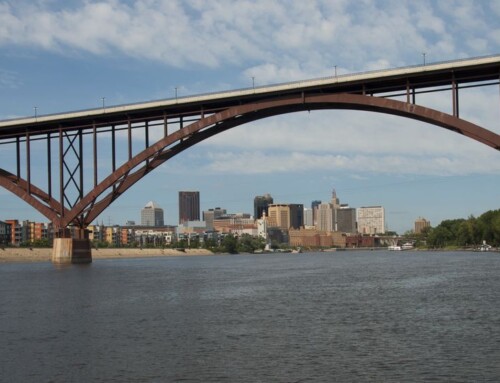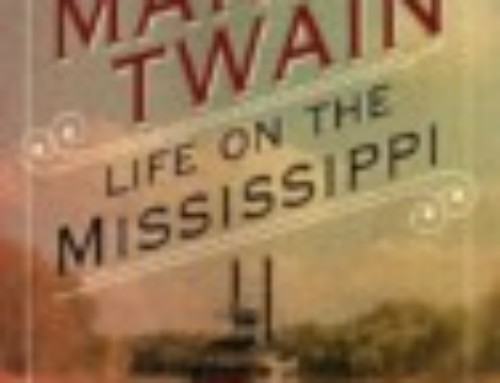Rising 630 feet above the Mississippi River and covered in gleaming stainless steel, the Gateway Arch is one of the most famous monuments in the world. It has become a proud symbol of St. Louis, yet somehow it has felt apart from the city where it was built. Busy streets and parking garages created physical barriers that kept the park walled off. Now that an ambitious plan to remake the national park is complete, the Arch finally feels like it is part of St. Louis.
Sweeping walkways guide visitors from downtown to the Arch and to the riverfront. A new entrance welcomes visitors in comfort. A re-imagined museum takes a broader role of American westward expansion, while placing St. Louis squarely in the center of the story. The whole park even has a new name—the Gateway Arch National Park.
About the Arch
In the midst of the Great Depression, St. Louis leaders concocted a plan to redevelop the riverfront by building a monument to President Thomas Jefferson and to American expansion west. Civic leaders outlined the initial plans in a single December day in 1933 in the office of Mayor Bernard Dickmann. Just six months later President Franklin Roosevelt signed a bill that created the United States Territorial Expansion Memorial Commission (USTEMC). Thirty-seven blocks of riverfront buildings (home to 5,000 people and 290 businesses) were razed between 1939 and 1941. With the pace of work was slowed by World War II, some civic leaders began to consider other plans for the riverfront, like building a stadium or making the area a permanent (and very large) parking lot.
In order to restart momentum for a monument, the Jefferson National Expansion Memorial Association sponsored an architectural competition in 1947 that drew proposals from some of the best architects in the world. The winner, 37-year-old Eero Saarinen, was the relatively unknown son of a famous Finnish architect, Eliel Saarinen.
Eliel had also submitted a design proposal, and when the five finalists were chosen, a congratulatory telegram was mistakenly sent to Eliel, who celebrated with champagne before the the review team corrected their mistake. Construction was delayed by another war (Korea) and by complications with a railroad line that ran along the river. When Eero Saarinen died in 1961 from a brain tumor, construction on the Arch was only just getting underway.
Work on the foundations began in earnest in June 1962, and on October 28, 1965, the last triangular section was carefully put in place in front of an anxious crowd of VIPs and residents. The completed structure—still the tallest monument in the United States—quickly became an international symbol for St. Louis. The Jefferson National Expansion Memorial, as it was officially known, drew millions of visitors every year, many of whom rode the cramped trams to the top to complete the experience.
The Revisioning
Saarinen’s soaring Arch has received a lot of praise over time, but the area around the Arch seemed like an afterthought. The park felt very much like someone had carved a hole in the St. Louis riverfront and just dropped the park in it. Visitors who chose to walk between the park and downtown navigated narrow sidewalks along a daunting web of busy city streets and over a sunken interstate highway. Even locals like me found the walk intimidating, so it’s no surprise that many visitors didn’t bother to try. With a parking garage on the north end of the park, visitors could park there, visit the Arch, then get out of St. Louis without doing anything else.
City leaders had been concerned about these limitations for some time, but it wasn’t until the early 2000s that a serious effort to better integrate the park into the city gained momentum. The Park Service sponsored a new international design competition that drew ideas like cable car rides over the Mississippi River and restored wetlands along the riverfront.
In 2010, the committee chose New York City’s Michael Van Valkenburgh as the winner, a firm whose credits include the redesigned Pennsylvania Avenue in front of the White House and Brooklyn Bridge Park. The project budget was set at $380 million, and voters approved a sales tax increase that provided $85 million in funding. Most of the funding, though—$250 million—came from private donors, the largest private capital campaign for any single park in the National Parks portfolio.
Connecting to St. Louis
The daunting web of streets between the Old Courthouse and Arch is now mostly gone. Traffic has been rerouted, and a park built atop a new bridge over the interstate beckons visitors with grassy knolls and shaded benches to rest on. Visitors can now walk easily from the Old Courthouse through the park to the new entrance on the west side of the Arch grounds. Pedestrian walkways branch off and weave their way past ponds and gardens. Sixteen new interpretive markers along a mile-long route set the Arch grounds in historical context.
On the north side of the grounds, the old parking garage was torn down and replaced with a landscaped amphitheater. As you walk along the north side of the park, the paths lead you naturally toward the old riverfront neighborhood called Laclede’s Landing.
While the changes to the park grounds add to its beauty, they have also made the grounds far more accessible. There are no stairs to negotiate to enter the grounds and no steps at the new entrance. Prior to the renovation, the only way to get to the Mississippi River from the Arch was via the 65 steps of the Grand Staircase; now, however, gently sloping ramps provide another option.
The road along the riverfront—Sullivan Boulevard—was raised 30 inches so it won’t flood as regularly. In addition, the statue of Lewis and Clark called The Captain’s Return was moved to a higher location, where it is more selfie-friendly and will disappear into the river less often.
A Broader Historical View
The changes underground are just as appealing, where 46,000 square feet of new space makes the Arch experience more pleasing. Natural light from the broad windows of the new entrance warms and brightens a space that used to feel like a bomb shelter (which it technically was/is).
Visitors no longer have to queue in the hot sun (or in the cold) as they wait to go through security. Instead, they now enter a spacious lobby where they can buy tickets, use a restroom, and ask tourism staff for a few tips before going through the security check.
After the security screening, visitors enter a hall where a series of large Neoprene screens stream images from the western frontier—people migrating west and bison parading across wide-open prairies (historically accurate reproductions filmed just for the park). The hallway then leads visitors through the new museum space and toward the boarding areas for the trams. While the old Museum of Westward Expansion had its charms—like animatronic historical figures and bison taxidermy—the former museum, like the taxidermy, didn’t age well.
The new museum presents a broader perspective on western expansion. As America pushed its boundaries west, Americans encountered a multi-cultural world. The new museum touches on many of their stories, like the American Indians who lived with the early French settlers of St. Louis. It also presents stories about enslaved Africans in St. Louis and Dred and Harriet Scott’s lawsuit for freedom that reached the Supreme Court and helped spark the Civil War.
While visitors to the old museum might have rightly wondered why the Arch was in St. Louis at all, the new museum places St. Louis at the center of the story. Some of the more memorable exhibits include an animated video tour of colonial St. Louis, an authentic recreation of a colonial-era home, a diorama of the 1852 riverfront, a rotating display of designs for the memorial that were rejected, and images of the riverfront neighborhood that was razed for construction of the Arch.
Continuing past the museum, visitors will find a new, expanded gift shop, a movie theater (showing the popular film on the construction of the Arch, Monument to the Dream), and a new cafeteria. The experience of getting to the top of the Arch hasn’t been changed; visitors take the four-minute ride up in one of eight cars that each fit five passengers elbow-to-elbow. From the top of the Arch, views of the city and the river spread out to the horizon.
That ride to the top can be too cozy for some folks, and the trams aren’t built to accommodate people with physical limitations. If you are among the people that can’t or don’t want to ride a tram up, the visitors center now has a replica of the Arch keystone where you can watch a livestream of the view.
The Gateway Arch National Park also includes the Old Courthouse. The building dates to 1839; an appeals court here reviewed the Scott’s case for freedom in 1847 and 1850, deciding in their favor. The U.S. Supreme Court later overturned the decision. The Courthouse has several exhibits about the Scott’s case and its place in U.S. history.
If you’ve never visited the Arch, now is an ideal time to go. Even if you have been there in the past, you’ll find the new museum alone is worth a repeat trip. And once you’re there, you’ll find it a lot easier to spend a little extra time getting to know the city that has been its home for 53 years.
If You Go
Admission to the Arch grounds and museum is free. Admission to the movie costs $7, while tickets for the tram ride to the top cost $13. You can also purchase tickets for a one-hour sightseeing cruise on the river ($20). You can purchase combo tickets that save a few bucks. Book your tickets in advance during busy times of the year.
There is no parking on the Arch grounds, but downtown St. Louis has several parking garages. The Stadium East garage is a convenient option; it is a five-minute walk from the new entrance. There is also on-street parking downtown, but it comes with a two-hour limit Monday-Saturday from 8am to 7pm. When the Cardinals baseball team plays a home game, visitors should be prepared to park further away from the Arch.
About Downtown St. Louis
Visitors will find other attractions within walking distance of the Old Courthouse and Arch, including the interactive sculpture garden called CityGarden (along Market Street between 8th and 10th Streets), the National Blues Museum, Busch Stadium, and the Old Cathedral (officially known as the Basilica of St. Louis, King of France). Groups like Renegade STL offer guided walking tours of downtown, as well as tours of other places in the region.
Downtown has many places to eat. While many are parts of national chains, Chili Macs (510 Pine St.) is a traditional diner, Park Avenue Coffee (417 N. 10th St.) sells gooey butter cake—a St. Louis specialty, and Kaldi’s at CityGarden sells snacks and sandwiches. Ballpark Village next to Busch Stadium also has several dining options, but it gets busy when the Cardinals are playing a game.
Community-supported writing
If you like the content at the Mississippi Valley Traveler, please consider showing your support by making a one-time contribution or by subscribing through Patreon. Book sales don’t fully cover my costs, and I don’t have deep corporate pockets bankrolling my work. I’m a freelance writer bringing you stories about life along the Mississippi River. I need your help to keep this going. Every dollar you contribute makes it possible for me to continue sharing stories about America’s Greatest River!
